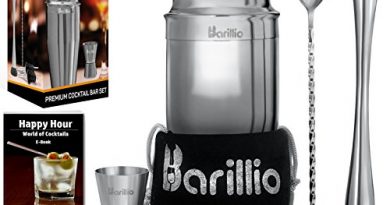Work-Life Integration Strategies for Seamless Daily Transitions
In the fast-paced landscape of the modern world, the traditional concept of work-life balance is evolving into a more fluid and interconnected approach known as work-life integration. Rather than viewing work and personal life as separate entities, work-life integration encourages individuals to blend and harmonize these aspects seamlessly. This paradigm shift recognizes the dynamic nature of people’s daily lives and emphasizes the importance of finding synergy between professional and personal pursuits. This article explores strategies for achieving work-life integration, allowing for smoother transitions between work and personal life.
- Rethinking the Traditional Boundaries
Work-life integration begins with a fundamental shift in mindset, challenging the notion of strict boundaries between work and personal life. Instead of compartmentalizing each aspect into separate silos, embrace the idea that these domains can coexist harmoniously. By recognizing the interconnectedness of work and personal life, you lay the groundwork for a more integrated and fluid approach to daily living.
- Establishing Clear Priorities
Central to work-life integration is the identification of clear priorities. Define what matters most in both your professional and personal realms. By understanding your priorities, you can allocate time and energy in a way that aligns with your overarching goals. Whether meeting a work deadline, attending a family event, or pursuing personal hobbies, conscious awareness of your priorities ensures intentional decision-making in the moments that matter.
- Creating a Flexible Schedule
Flexibility is a cornerstone of work-life integration. Craft a flexible schedule that accommodates the ebb and flow of both work and personal commitments. Embrace the idea that not every workday or personal day needs to follow a rigid structure. A flexible schedule allows for spontaneity, adaptability, and the freedom to respond to the changing dynamics of your life. Embrace the concept of flextime, where you have the liberty to adjust your work hours to align with your personal needs.
This flexibility enables you to attend to personal matters during traditional work hours and compensate by working during times when you are most productive. Additionally, consider incorporating designated “off” hours, free from work-related tasks, fostering a healthy work-life balance. This approach not only provides a sense of autonomy but also acknowledges the dynamic nature of life. Embracing flexibility as a cornerstone of work-life integration allows you to navigate the intricate dance between professional and personal spheres with agility and grace.
- Utilizing Remote Work Opportunities
Advancements in technology have made remote work more accessible than ever. Leveraging remote work opportunities can be a game-changer in achieving work-life integration. Whether it’s working from home, a coworking space, or a location of your choice, remote work provides the flexibility to balance professional responsibilities with personal activities seamlessly. It breaks down the physical barriers between work and home, fostering a more integrated lifestyle.
- Establishing Rituals for Transitions
Create rituals to mark transitions between work and personal life. Rituals act as psychological cues, signaling the brain that it’s time to shift focus. This could be something as simple as changing out of your work attire, taking a short walk, or engaging in a brief mindfulness practice. Establishing rituals for transitions helps create mental space, allowing you to be present in the current moment, whether at work or with loved ones.
- Setting Clear Boundaries
While work-life integration encourages fluidity, it’s equally important to set clear boundaries to prevent burnout and maintain a sense of balance. Clearly define when work begins and ends, even if you’re working from home. Establish boundaries for personal time, signaling to yourself and others that certain periods are dedicated to family, relaxation, or personal pursuits. Boundaries provide structure within the integrated framework, preventing one aspect from overpowering the other.
- Embracing Time-Blocking Techniques
Time-blocking is a powerful strategy for work-life integration. Allocate specific blocks of time to different activities, whether work-related tasks, family time, or personal endeavors. This intentional division of time ensures that each aspect of your life receives attention without feeling neglected. Time-blocking helps you manage your schedule efficiently and promotes a seamless transition from one focus area to another. If one area is taking up too much of your time, you can look into ways to be more efficient, for instance, you could buy bulk herbs wholesale along with other bulk ingredients if your shopping is taking too much of your time.
- Incorporating Personal Activities into Workdays
Blend personal activities into your workdays strategically. This could involve scheduling personal calls during breaks, incorporating short exercise sessions, or dedicating time for personal development activities. By seamlessly integrating personal pursuits into your workday, you create a more holistic and fulfilling experience, eliminating the need for a stark separation between work and personal life.
- Communicating Effectively
Effective communication is pivotal in achieving work-life integration, especially when working within a team or with family members. Clearly communicate your availability, priorities, and expectations to colleagues, superiors, and loved ones. Set realistic expectations and be transparent about your schedule. Effective communication minimizes misunderstandings, ensuring a smoother transition between work and personal commitments.
- Leveraging Technology Wisely
Technology is a powerful enabler of work-life integration when used judiciously. Leverage productivity tools, communication apps, and project management software to streamline work tasks and stay connected with colleagues. At the same time, establish boundaries for technology use to prevent it from encroaching on personal time. By mastering the art of leveraging technology wisely, you can enhance efficiency in both professional and personal spheres.
- Engaging in Mindful Transitions
Mindful transitions involve intentionally shifting your focus from one activity to another with full awareness. As you move from work to personal time, take a few moments to center yourself. Practice mindfulness techniques, such as deep breathing or brief meditation, to clear your mind and create a mental space for the upcoming focus. Mindful transitions contribute to a smoother flow between work and personal responsibilities.
- Practicing Self-Compassion
Work-life integration is not about achieving perfection in every moment. It’s a dynamic and evolving process that requires self-compassion. Understand that there will be days when work demands take precedence and other days when personal matters require more attention. Be kind to yourself, acknowledge the challenges, and celebrate the successes, however small. Practicing self-compassion is an essential component of maintaining well-being within the integrated framework.
Conclusion
Work-life integration is a paradigm shift that invites individuals to craft a seamless and harmonious life. By rethinking traditional boundaries, establishing clear priorities, embracing flexibility, utilizing remote work opportunities, creating rituals, setting boundaries, time-blocking.




